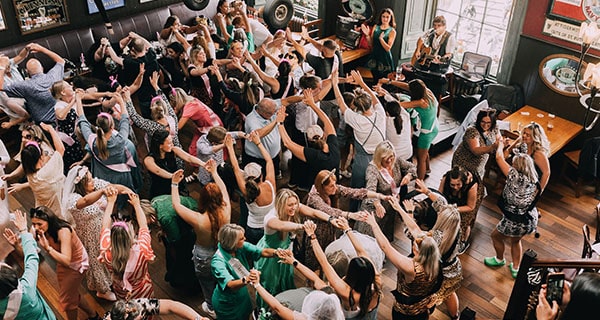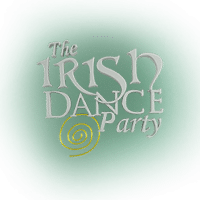Discovering the rich tapestry of Irish culture: a journey through tradition and heritage

Ireland would emerge as a land of grace and mystery, its green hillocks touching the ancientness of stone monuments, with the whispers of times gone by speaking through music, languages, and art. The richness in Irish culture does not lie in the vibrancy of traditions alone but rather in the unbroken spirit of its people. This is an island that over many centuries has grown an identity, very much hewn from its history, struggles, and creative energy. Irish culture today can send the world into a modern exploration of its interpretations and timeless traditions that keep it alive and well.
In this investigation of Ireland’s cultural geography, one explores defining features of Irish identity, from the power of its language to the allure of its music, dance, and art. We will also consider how festivals, food, and literature continue to express Ireland’s rich heritage and take its place on the world stage.
What Defines Irish Culture?
Irish culture is a complex interplay of history, mythology, and community values. The roots of Irish culture are deeply embedded in the ancient Celtic tradition that influenced everything from its art and storytelling to music and spirituality. But the essence of Irish culture exceeds this historical emergence; it resides within everyday practices, traditions, and collective memories of the Irish.
Irish culture, at its core, is all about connectivity-between the ground, ancestors, and community. People in Ireland have this feeling of belonging to one greater story, one which is continuously modified by its participants. This feeling of shared heritage is seen through the warmth in hospitality that the Irish are famous for, and the pride that they derive from their customs.
The use of symbolism in Ireland spans everything from the timeless Celtic knots that adorn jewellery and manuscripts to a Claddagh ring and its timeless message of love, loyalty, and friendship. More than just pretty ornaments, each is imbued with meaning, offering a window into Ireland’s history and values.
The Importance of Language in Irish Culture: Gaelic vs. English
The language is part and parcel of any culture; this is no exception in Ireland. Irish, also commonly known as Gaeilge, is rather more than a language but holds within it history, identity, and resilience. Centuries passed, wherein Gaeilge was well established as the day-to-day primary means of communication of the Irish people throughout the island; it was captured in poetry and stories for history.
Gaeilge, or Irish, holds a dear place in the nation’s identity. Once spoken throughout the island, the language suffered greatly under centuries of British rule, especially in the 19th century. By the time the Great Famine took place (1845–1852), English had already gained dominance, and native Irish speakers became few.
However, it gained momentum during the Gaelic Revival of the late 19th and early 20th centuries. People like Douglas Hyde, who later became the first President of Ireland, were promoting the language as part of one’s nationality. Thus, in 1922, when Ireland was independent, Gaeilge assumed the position of an official language.
Today, it is taught at school, and Gaeltacht areas—those places where Irish is still spoken as the first language—serve as cultural havens for its preservation. Other ways in which the language has been revived include the rise of Irish-language media and using Gaeilge in modern music and poetry, thereby ensuring that the language lives for generations to come.
Traditional Irish Music and Dance: The Heartbeat of the Nation
Music and dance in Ireland are more than just a form of entertainment; they are a heartbeat into which the nation flows. Irish music has that peculiar sound that says so much about the spirit of the land, from its lively melodies down to its haunting ballads. It’s a tradition passed down through generations, oftentimes played in intimate settings like family gatherings or in local pubs.
Traditional Irish music is played on a unique combination of instruments, the fiddle, tin whistle, bodhrán drum, and uilleann pipes. It is an instantly recognizable, yet oddly otherworldly sound-one that can evoke natural rhythms and even the weight of history. The songs themselves most often concern tales of love, loss, and resilience, mirroring the strengths and weaknesses in the Irish experience.
The other vital manifestation of Irish culture is dance. From step dancing-very detailed footwork-to the communal exuberance of céilí dancing, Irish dance celebrates rhythm, motion, and connection. While ceilí dances are performed in groups and often accompanied by traditional music, step dancing is highly disciplined, requiring precision and grace. On the one hand, it has shown through shows like Riverdance the beauty and complexity of Irish dance to international audiences and encouraged a new generation to take pride in their tradition.
Music and dance traditions are never static; they are a living, breathing art form that constantly evolves. Most of today’s Irish musicians merge elements from traditional music with modern genres.
Culinary Delights: Exploring Traditional Irish Cuisine
Irish cuisine is inextricably linked to the agricultural history of the island and reflects ingenious ways in which its people created dishes with whatever bounty the land would provide. Traditional Irish food was simple, heartily designed to nourish and sustain long days of labour.
One of the most iconic dishes is Irish stew, a comfortable combination of lamb or beef, potatoes, carrots, and onions. This simple dish speaks much to how Irish tradition tries to make full use of whatever is at its disposal. Another staple is soda bread: an easily made bread using baking soda instead of yeast. Served with butter or jam, it is quintessentially part of an Irish meal.
Ireland has, over the last number of years, seen some kind of culinary renaissance where chefs are very creative with thinking up new ways to present traditional dishes with the addition of fresh and local ingredients. The food scene is alive, celebrating Ireland’s heritage with current trends. One will find everything in Ireland from boxty, potato pancakes, to gourmet seafood dishes that epitomise coastal bounty.
Food in Ireland is not just for filling the belly; it’s also one sure way of reaching people and sharing in their culture. Every meal is usually accompanied by stories, laughter, and warm hospitality for which Irish people are famous, hence making food highly important in the experience of culture.
The Role of Festivals and Celebrations in Preserving Irish Culture
Festivals are part and parcel of Irish culture to mark the passing of a particular tradition into the next generations, but it is also one way to unite the people within the community. Probably the most famous festival is St. Patrick’s Day, which is globally famous, not only in Ireland but indeed around the world. It is a day to honour Ireland’s patron saint and indulge in its rich cultural heritage via parades, music, and dancing.
Other events, such as the Galway Arts Festival and Wexford Opera Festival, make Ireland a hotbed of creative expression-the blend of performances, exhibitions, and workshops not only displays the nation’s artistic talent but also helps to firmly embed its culture and identity. Often rooted in the Celtic calendar, local festivals further contribute to preserving Irish heritage. Samhain, for example, the ancient festival which gave the world Halloween, is still celebrated in one form or another-binding modern Ireland to its pagan past.
With all these festivals, Irish culture stays alive and within an arm’s reach; one can participate in all age groups.
Arts and Literature: The Contribution of Great Irish Writers and Artists
Ireland is, of course, proud of the contribution to literature and the arts, but most importantly, scholars like James Joyce, W.B. Yeats, to Seamus Heaney, who stamped their indelible marks on the world’s literature; their works are flooded with Ireland’s landscape, history, and mythology amidst vibrant universal themes.
From the detailed patterns of ancient Celtic art to the bold statements of modern artists reflecting the change in the nation’s identity, the place of visual arts is no less important in Irish culture. Today, Irish art-both traditional and modern-is represented by galleries nationwide that accentuate the creativity and innovation of Irish artists.
The Global Reach of Irish Culture
The Irish diaspora, estimated at over 70 million worldwide, has played a significant role in dispersing the culture of Ireland. Festivals, music, and dance, along with storytelling, go on from home in Irish communities across North America, Australia, and far beyond.
Irish culture only recently began its rise onto the global stage. From the box-office success of Irish movies such as The Banshees of Inisherin (2022), right through to the popular phenomenon of Irish tourism, the world remains spellbound by the depth and rich warmth of Irish heritage.
Irish culture is a balance that moves with poignancy between history, resilience, and ingenuity. It is a story of connection between past and present, between land and people, between Ireland and the world. In embracing its tradition and shaping it toward the future, Ireland can make sure its unique character will continue to be one of pride and inspiration for generations to come. In Irish culture, to feel its total immersion is to experience a timeless legacy whose repercussions loudly reverberate beyond the shores of the Emerald Isle.
